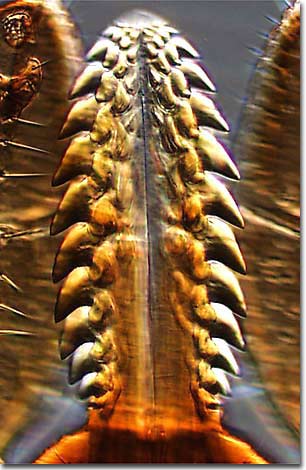Hoffman Modulation Contrast Image Gallery
Deer Tick (Ixodes dammini)
The deer tick (Ixodes dammini) is responsible for the transmission of Lyme disease and is about the size of a sesame seed. Hoffman modulation contrast illumination was used to image the barbed mouth of a nymph-stage deer tick.

Deer ticks are found in grassy areas and in woodlands where they exist in three life stages of larva, nymph, and adult. These ticks infest warm blooded animals including man, dogs, cats, horses, cows, and (of course) white-tailed deer. Several species of Ixodes carry the Lyme disease bacteria, which has become the most frequently diagnosed tick-borne illness in the United States.
